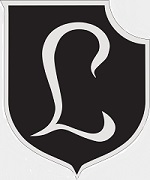Dragon DRR60306 German Sd. Kfz. 251/7 Half Track w/2.8cm sPzB41 Anti-Tank Gun - Panzer Lehr Division, Southern Normandy, 1944 (1:72 Scale)
"With this division alone, you must throw the Allies into the sea. Your objective is the coast no, not the coast, it is the sea."
- Heinz Guderian to General Fritz Bayerlein, East Prussia, January 26th, 1944
 The Sonderkraftfahrzeug (Sd. Kfz.) 251 half-track had its origins in the same requirement as the smaller and lighter Sd. Kfz. 250. Intended as an armored personnel carrier, the Sd. Kfz. 251 entered service in 1939, and quickly became the standard means of transport for the panzergrenadiers. As it turned out, the Sd. Kfz. 251 was an especially useful vehicle, not only capable of keeping up with the newly formed panzer divisions but also providing invaluable support as well. All told, there were 22 special-purpose variants built, including the menacing-looking Stukavoss ("infantry Stuka"), which mounted a series of rocket launchers on the outer sides of the vehicle. Other variants included a flame-thrower, anti-tank, and communications vehicle, as well as an observation post, ambulance, and infra-red searchlight carrier. Despite suffering from early reliability problems, the Sd. Kfz. 251 was produced by the thousands, eventually becoming a trademark of the German panzertruppe on all fronts.
The Sonderkraftfahrzeug (Sd. Kfz.) 251 half-track had its origins in the same requirement as the smaller and lighter Sd. Kfz. 250. Intended as an armored personnel carrier, the Sd. Kfz. 251 entered service in 1939, and quickly became the standard means of transport for the panzergrenadiers. As it turned out, the Sd. Kfz. 251 was an especially useful vehicle, not only capable of keeping up with the newly formed panzer divisions but also providing invaluable support as well. All told, there were 22 special-purpose variants built, including the menacing-looking Stukavoss ("infantry Stuka"), which mounted a series of rocket launchers on the outer sides of the vehicle. Other variants included a flame-thrower, anti-tank, and communications vehicle, as well as an observation post, ambulance, and infra-red searchlight carrier. Despite suffering from early reliability problems, the Sd. Kfz. 251 was produced by the thousands, eventually becoming a trademark of the German panzertruppe on all fronts.
The Sd. Kfz. 251 halftrack was a highly successful design, with a bewildering array of variants produced during WWII. The 251/10, for example, was a halftrack equipped with a 3.7cm PaK 36 antitank gun. This small-caliber weapon designed by Rheinmetall first appeared in 1936, but by the time WWII broke out it was outdated and ineffective against more heavily armored enemy tanks. Thus, a number of these 'door knockers' (as the gun was sometimes nicknamed by German troops) were mounted on the hull superstructure of some German halftracks to provide light and mobile anti-armor support.
The sPzB 41 squeeze-bore antitank gun had a caliber of 2.8cm. It saw action on the Eastern Front, in North Africa and Western Europe. The addition of this weapon on the Sd.Kfz. 251 halftrack gave German troops a useful antitank capability. Dragon Armor has released an Sd.Kfz. 251/7 - a vehicle used by combat engineers (or pioneers) - mounting just such a weapon. The engineer version of the famous German halftrack carried bridging sections and engineering equipment such as explosives. The Ausf. D version was the final production version of the Sd.Kfz. 251 series with simplified construction, and this is what Dragon Armor Item No. 60306 represents.
The model appears in a plain yellow-colored camouflage scheme that has been authentically weathered in a typical worn style. All details such as the 2.8cm sPzB 41 gun are delicately reproduced, and the open-topped vehicle is accurately manufactured. It represents a vehicle of the Panzer Lehr Division fighting in Normandy in the summer of 1944. 'Lehr' means 'demonstration' since the unit was formed from training and demonstration troops in 1943. This elite armored division was lavishly equipped compared to other panzer divisions, though several times it fought almost to annihilation, such as in the Caen battles in Normandy. This halftrack from the 'demonstration' division is all ready for public display!
Sold Out!
Dimensions:
Length: 3-inches
Width: 1-inch
Release Date: September 2007
 Historical Account: "Training and Demonstration" - The Panzer Lehr Division was formed at Potsdam in November 1943, comprised principally of demonstration units from the various Panzer schools. It was transferred to France in February 1944, then to Hungary in April, where it absorbed Infanterie-Lehr Regiment 901. The division returned to France shortly thereafter where it opposed the Allied landings in June. Panzer Lehr suffered heavy losses at Caen during a massive carpet bombing attack and additional losses as it withdrew across France. It was sent to the Saar for refitting and later saw action in the Ardennes during Operation "Wacht am Rhein". After the winter counteroffensive, the division was trapped in the Ruhr pocket in early 1945 and forced to surrender to the US Army in April.
Historical Account: "Training and Demonstration" - The Panzer Lehr Division was formed at Potsdam in November 1943, comprised principally of demonstration units from the various Panzer schools. It was transferred to France in February 1944, then to Hungary in April, where it absorbed Infanterie-Lehr Regiment 901. The division returned to France shortly thereafter where it opposed the Allied landings in June. Panzer Lehr suffered heavy losses at Caen during a massive carpet bombing attack and additional losses as it withdrew across France. It was sent to the Saar for refitting and later saw action in the Ardennes during Operation "Wacht am Rhein". After the winter counteroffensive, the division was trapped in the Ruhr pocket in early 1945 and forced to surrender to the US Army in April.








![USAF Boeing F-15E Strike Eagle Multi-Role Fighter - "Spirit of Goldsboro" 88-1702, 334th Fighter Squadron "Eagles", 4th Fighter Wing, Seymour Johnson Air Force Base, North Carolina, May 2023 [Anniversary Scheme] (1:72 Scale)](http://cdn4.volusion.store/qh9e9-jdqv9/v/vspfiles/photos/HA4548-1.jpg?v-cache=1740197136)
